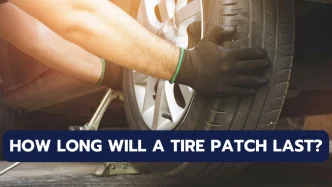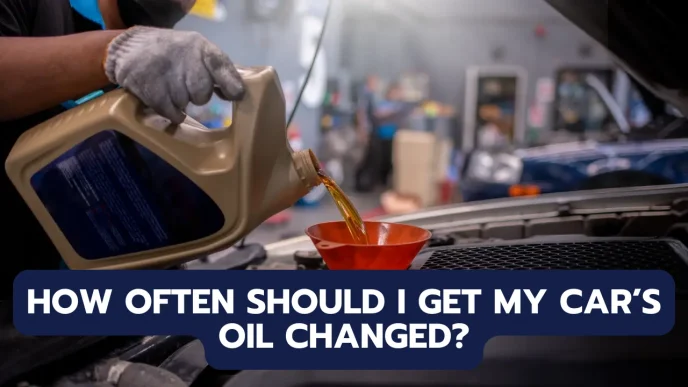Brake pads are one of the most critical components of your vehicle’s braking system. Without them, stopping your car safely and effectively would be impossible. Like oil changes and tire replacements, brake pads are considered “wear items,” meaning they need regular replacement to keep your vehicle running safely. However, determining exactly how long brake pads last can be challenging because numerous factors influence their lifespan. While a general estimate for replacing brake pads is around 50,000 miles, some pads may wear out as early as 25,000 miles, while others can last up to 75,000 miles. Here’s a detailed look at how brake pads work, what affects their longevity, and the signs indicating it’s time for a new set.
How Do Brake Pads Work?
The Basics of a Hydraulic Braking System
Your vehicle’s braking system is a hydraulic system that relies on brake fluid to transfer force. When you press the brake pedal, it creates hydraulic pressure in the brake lines. This pressure forces the brake calipers to squeeze the brake pads against the disc rotors attached to your wheels. The friction generated between the pads and rotors slows down or stops the vehicle.
The Role of Friction Material
Brake pads are made of friction material that wears away slightly every time you apply the brakes. This material is designed to provide the necessary resistance to stop the vehicle efficiently. Because braking shifts your car’s weight forward, front brake pads typically handle more stopping power than the rear pads. As a result, front pads tend to wear out faster than rear pads.
Factors That Determine How Long Brake Pads Last
Type of Vehicle
The type of vehicle you drive significantly impacts brake pad wear. Smaller, lighter vehicles are easier to stop and place less strain on the brakes. In contrast, larger trucks and SUVs require more braking force due to their weight, leading to faster pad wear. Additionally, sports cars and high-performance vehicles often experience quicker brake pad wear because of aggressive driving and higher-speed braking.
Transmission Type
The type of transmission in your vehicle also plays a role. Cars with a manual transmission can utilize engine braking by downshifting, which helps slow the car without relying solely on the brakes. This typically extends brake pad life. Conversely, vehicles with automatic transmissions rely more heavily on the brakes to decelerate, causing the pads to wear out faster.
Driving Conditions
Where and how you drive affects how quickly your brake pads wear out. The following conditions contribute to varying rates of brake pad wear:
- Highway Driving: Long stretches of open road require minimal braking, allowing brake pads to last longer.
- Stop-and-Go Traffic: Frequent braking in city driving or traffic congestion wears down brake pads more quickly.
- Towing or Hauling: Carrying heavy loads increases the vehicle’s weight, requiring more braking force and accelerating pad wear.
- Mountainous Terrain: Driving on steep inclines necessitates frequent braking, causing pads to wear out faster.
Driving Style
Your personal driving habits are a major factor in brake pad longevity. If you:
- Accelerate quickly and brake abruptly, your brake pads will wear out faster.
- Ride the brake pedal or apply constant pressure while driving, you’ll increase friction and wear.
- Practice smooth, gradual braking, your brake pads are likely to last much longer.
Type of Brake Pads
Brake pad material affects how long they last. There are several types of brake pads, each with different durability characteristics:
- Organic Brake Pads: Made from materials like rubber, glass, and Kevlar. They’re affordable but wear out quickly.
- Semi-Metallic Pads: Contain metal fibers for durability and heat dissipation. They last longer than organic pads but can wear rotors faster.
- Ceramic Pads: Made from ceramic and copper fibers, these pads are durable, produce less dust, and offer excellent performance. They’re more expensive but last the longest.
Manufacturer Guidelines
Most vehicle manufacturers include brake pad inspections in regular maintenance schedules. Check your owner’s manual for specific recommendations on when to inspect and replace your brake pads. Following these guidelines can help you catch worn pads before they become a safety hazard.
Signs That Your Brake Pads Are Worn Out
Regularly inspecting your brake pads is essential, but there are also clear signs that your pads need replacement. If you experience any of these symptoms, it’s time to have your brakes checked immediately.
Screeching or Squealing Noises
Many brake pads include wear indicators — small metal tabs that produce a high-pitched squeal when the pads are nearly worn out. If you hear squealing when you press the brake pedal, your brake pads are likely due for replacement.
Brake Warning Light
Some modern vehicles have sensors that trigger a brake warning light on the dashboard when the pads are too thin. Refer to your owner’s manual to confirm what the warning light indicates and schedule an inspection promptly.
Grinding or Growling Noises
A grinding noise when braking usually means the brake pads are completely worn down, causing the metal backing to scrape against the rotors. This can damage the rotors, leading to more expensive repairs and reduced braking efficiency.
Steering Wheel Vibration
If your steering wheel vibrates when braking, it may indicate uneven wear on the front brake rotors. This can happen if the brake pads are excessively worn, causing inconsistent contact with the rotors.
Vehicle Pulling to One Side
If your car pulls to one side when braking, it could mean you have uneven brake pad wear, a stuck caliper, or a brake fluid issue. This can compromise your control over the vehicle and should be addressed immediately.
How to Extend the Life of Your Brake Pads
Practice Smooth Braking
Adopt a driving style that emphasizes smooth acceleration and gradual braking. Avoid abrupt stops whenever possible, and give yourself plenty of time to slow down.
Use Engine Braking
If you drive a manual transmission, downshift to help slow the vehicle. This reduces the reliance on your brakes and extends pad life.
Avoid Riding the Brake Pedal
Keep your foot off the brake pedal unless you need to slow down or stop. Riding the brakes generates constant friction, wearing down the pads faster.
Reduce Vehicle Load
Avoid carrying unnecessary heavy loads. The more weight your vehicle carries, the harder the brakes have to work.
Regular Maintenance and Inspections
Follow your manufacturer’s maintenance schedule for regular brake inspections. Checking your pads and rotors periodically can help you catch issues early and avoid costly repairs.
How often should I replace my brake pads?
Brake pads typically need replacement every 25,000 to 75,000 miles, depending on driving habits, vehicle type, and pad material. Check your owner’s manual for specific recommendations and inspect your brakes regularly.
How can I tell if my brake pads are worn out?
Common signs include squealing noises, a brake warning light, grinding sounds, and vibration when braking. If you notice any of these symptoms, have your brakes inspected immediately.
What happens if I don’t replace my brake pads?
Worn brake pads can lead to metal-on-metal contact, damaging the rotors and reducing braking efficiency. Ignoring worn pads can result in costly repairs and compromise your safety.
Do front brake pads wear out faster than rear pads?
Yes, because the front brakes handle most of the stopping power, front pads typically wear out faster than rear pads.
Are ceramic brake pads better than semi-metallic ones?
Ceramic pads last longer, produce less dust, and are quieter, but they are more expensive. Semi-metallic pads offer good performance and durability at a lower cost.
Is it safe to drive with worn brake pads?
No, driving with worn brake pads reduces braking efficiency and increases stopping distances, putting your safety at risk. Replace worn pads promptly to maintain safe braking performance.
How much does it cost to replace brake pads?
The cost varies depending on the vehicle and pad type, but a typical brake pad replacement ranges from $150 to $300 per axle, including labor.
Can I replace brake pads myself?
Yes, if you have the necessary tools and mechanical knowledge, you can replace brake pads yourself. However, if you’re unsure, it’s best to have a professional handle the replacement.
Does driving in the city wear out brake pads faster?
Yes, frequent stop-and-go driving in urban areas causes more wear on brake pads compared to highway driving.













